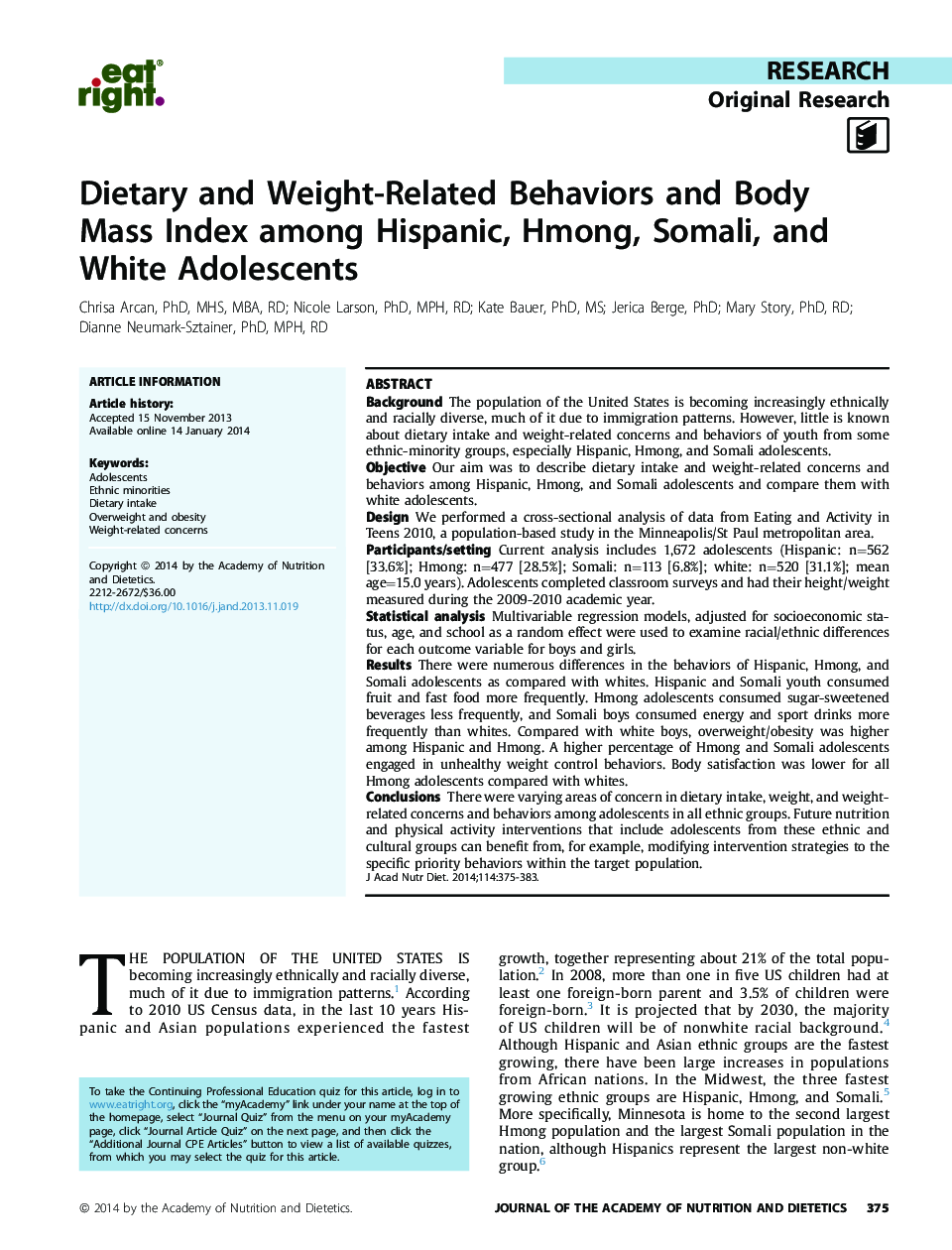| Article ID | Journal | Published Year | Pages | File Type |
|---|---|---|---|---|
| 5869549 | Journal of the Academy of Nutrition and Dietetics | 2014 | 9 Pages |
BackgroundThe population of the United States is becoming increasingly ethnically and racially diverse, much of it due to immigration patterns. However, little is known about dietary intake and weight-related concerns and behaviors of youth from some ethnic-minority groups, especially Hispanic, Hmong, and Somali adolescents.ObjectiveOur aim was to describe dietary intake and weight-related concerns and behaviors among Hispanic, Hmong, and Somali adolescents and compare them with white adolescents.DesignWe performed a cross-sectional analysis of data from Eating and Activity in Teens 2010, a population-based study in the Minneapolis/St Paul metropolitan area.Participants/settingCurrent analysis includes 1,672 adolescents (Hispanic: n=562 [33.6%]; Hmong: n=477 [28.5%]; Somali: n=113 [6.8%]; white: n=520 [31.1%]; mean age=15.0 years). Adolescents completed classroom surveys and had their height/weight measured during the 2009-2010 academic year.Statistical analysisMultivariable regression models, adjusted for socioeconomic status, age, and school as a random effect were used to examine racial/ethnic differences for each outcome variable for boys and girls.ResultsThere were numerous differences in the behaviors of Hispanic, Hmong, and Somali adolescents as compared with whites. Hispanic and Somali youth consumed fruit and fast food more frequently. Hmong adolescents consumed sugar-sweetened beverages less frequently, and Somali boys consumed energy and sport drinks more frequently than whites. Compared with white boys, overweight/obesity was higher among Hispanic and Hmong. A higher percentage of Hmong and Somali adolescents engaged in unhealthy weight control behaviors. Body satisfaction was lower for all Hmong adolescents compared with whites.ConclusionsThere were varying areas of concern in dietary intake, weight, and weight-related concerns and behaviors among adolescents in all ethnic groups. Future nutrition and physical activity interventions that include adolescents from these ethnic and cultural groups can benefit from, for example, modifying intervention strategies to the specific priority behaviors within the target population.
